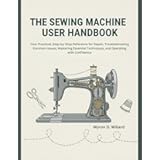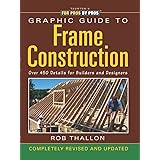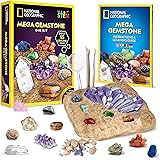Crafting Joy: Unleash Creativity with Easy DIY Toys for Kids
Research indicates that engaging children in creative, hands-on activities significantly boosts their cognitive development, with some studies suggesting a positive impact on problem-solving abilities. Moreover, a substantial portion of a child’s brain development, roughly 80%, occurs by age three, emphasizing the critical role of stimulating early experiences. The video above brilliantly showcases 25 cool and easy DIY toys for kids, offering a treasure trove of inspiration for parents, educators, and caregivers alike.
Creating homemade toys not only provides endless entertainment but also fosters essential skills in young learners. This article delves deeper into the multifaceted benefits of crafting simple, engaging DIY toys for kids, expanding on the visual inspiration provided by the accompanying video.
The Profound Benefits of Homemade Toys for Child Development
Engaging with homemade toys offers a unique pathway to holistic child development, often surpassing the passive engagement offered by many commercially produced items. These creations stimulate various developmental domains, from cognitive functions to fine motor control.
Fostering Cognitive Growth and Problem-Solving
When children engage with DIY toys, they are often involved in the creation process or interacting with items that encourage open-ended play. This type of play, as educational psychologists often highlight, is crucial for developing critical thinking and problem-solving skills. Unlike toys with a singular purpose, homemade items invite children to invent their own games and narratives.
Consequently, children learn to adapt, innovate, and think creatively about how to use materials. This active engagement strengthens neural pathways, improving their ability to process information and conceptualize solutions in everyday scenarios. Studies have demonstrated a correlation between open-ended play and enhanced divergent thinking capabilities in preschoolers.
Enhancing Fine Motor Skills and Sensory Exploration
The intricate movements involved in manipulating various textures and shapes of DIY toys significantly contribute to the development of fine motor skills. Activities like threading beads (made from pasta or paper rolls), stacking blocks (from cardboard), or manipulating homemade playdough strengthen the small muscles in the hands and wrists. Furthermore, this precision is vital for tasks such as writing, drawing, and dressing themselves.
In addition, homemade toys often incorporate diverse sensory elements—soft fabric scraps, rough sandpaper, smooth wooden blocks, or crinkly paper. This rich sensory input is instrumental in helping children understand their environment and process sensory information, which is a cornerstone of early childhood learning and essential for sensory integration.
Sustainable Play: Upcycling Household Items into Engaging Toys
One of the most compelling aspects of crafting easy DIY toys is the inherent sustainability and cost-effectiveness. Utilizing everyday household items for play not only reduces waste but also teaches children valuable lessons about resourcefulness and environmental responsibility.
Transforming Everyday Objects: Ideas and Inspiration
The potential for transforming common household items into captivating toys is virtually limitless. Cardboard boxes can become castles, cars, or rocket ships. Empty toilet paper rolls can be binoculars, sorting tubes, or components for a marble run. Old socks can be stuffed and decorated to become puppets or soft balls. Moreover, plastic bottles can be transformed into sensory bottles or bowling pins.
This approach encourages children to view ordinary objects with a creative lens, fostering imaginative thinking. It demonstrates that valuable play experiences do not require expensive purchases, but rather a keen eye for potential and a willingness to repurpose.
Budget-Friendly Fun: The Economic Advantage
The financial savings associated with making homemade toys are considerable. A family can easily spend hundreds of dollars annually on new toys, many of which may quickly lose a child’s interest or break. Conversely, DIY projects utilize materials that are often readily available at no extra cost, or for a minimal investment in basic craft supplies.
Consequently, families can allocate their budgets to other educational or recreational activities, while still providing their children with a rich and stimulating play environment. This budget-friendly strategy underscores the accessibility of creative play for all socioeconomic backgrounds, ensuring every child has the opportunity to engage in meaningful play.
Safety First: Essential Considerations for DIY Toy Projects
While the benefits of DIY toys are extensive, safety must always be the paramount consideration during creation and play. Ensuring that homemade items are appropriate and safe for children involves careful planning and supervision.
It is imperative to use non-toxic materials for all components, especially for items that might end up in a child’s mouth. Furthermore, small parts that could pose a choking hazard should be avoided for infants and toddlers. Always consider the child’s age and developmental stage when selecting projects and materials. Proper supervision during play is also crucial to ensure that toys are used safely and as intended, minimizing any potential risks.
Beyond the Basics: Expanding on Creative DIY Toy Ideas
The “25 cool and easy DIY toys” showcased in the video provide a fantastic starting point, but the realm of homemade playthings extends far beyond. Thinking creatively about categories of play can inspire even more innovative projects.
Imaginative Role-Play Props
Role-playing is fundamental for social and emotional development. Simple items like cardboard crowns, fabric capes, or a chef’s hat made from paper can transform a child into a king, superhero, or master chef. Moreover, felt food items or a pretend doctor’s kit crafted from recycled containers can facilitate hours of imaginative scenario play, building empathy and communication skills.
Educational Games and Puzzles
Homemade educational games can be tailored to a child’s specific learning needs. For instance, matching games using painted rocks or laminated picture cards, alphabet puzzles made from cardboard, or simple counting games with buttons or pasta are excellent for reinforcing academic concepts. These activities make learning interactive and fun, often without children realizing they are engaged in an educational task.
Sensory Bins and Exploration Tools
Sensory bins, filled with items like rice, pasta, water beads, or sand, combined with scoops, cups, and small toys, offer a rich tactile experience. Furthermore, exploration tools such as homemade magnifying glasses (using clear plastic and cardboard) or shakers filled with various materials can spark curiosity about the world. These sensory experiences are vital for cognitive development and self-regulation.
Crafting these easy DIY toys for kids ensures a continuous stream of engaging and educational experiences, enriching their childhood and supporting their growth.







